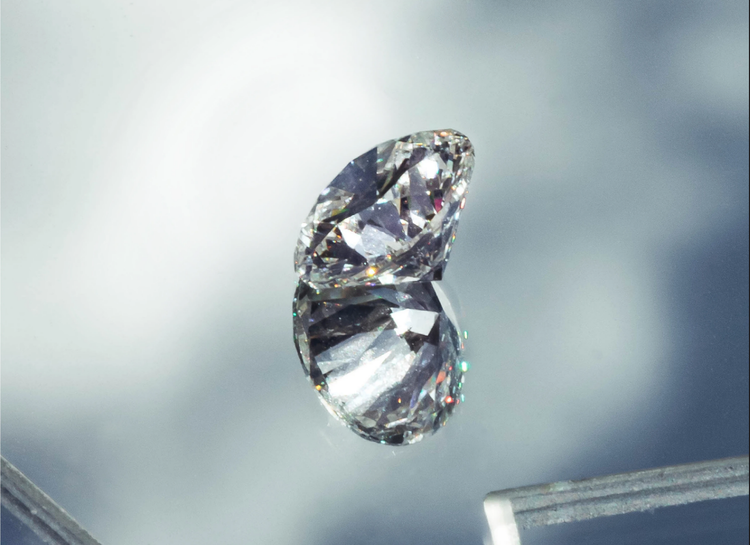Biochar-based adsorbents for Carbon Capture

I went through the various benefits of Biochar in the previous article but looking at its physical capabilities I noticed it could be also a great filtration material - in fact it is indeed currently being used to purify water in certain places in the world.
That made me think if, due to the same physical properties, biochar could also be used for capturing carbon from the air, via adsorption methods. This would practically mean that a company that is creating biochar, could sell it to a company that is capturing carbon dioxide for a price that is much 10 times cheaper (commercial zeolite, a common adsorption medium, costs 1000$ per ton). Then, once the medium would run its adsorption cycles and need to be discarded it would just live its remaining life sequestering carbon and improving the soil fertility as every biochar currently does.
I looked online and came up with a couple of papers around this but I mostly focused on this one: Biochar-based adsorbents for carbon dioxide capture: A critical review.
The conclusion is that:
- Biochar has great Carbon Dioxide adsorption capabilities, especially if it's engineered, like adding basic nitrogen functional groups which can enhance the capture of acidic CO2.
- However it's not yet ready for prime time, as so far it's only been tested in lab simulations (so it's unknown how a real gas mixture can react with it), it hasn't demonstrated high regeneration efficiency (so its adsorption capacity will decrease after a couple of cycles) and the economics of generating and engineering it specifically for its adsorption purpose have not been fully explored.
The ambitious biochar entrepreneur who is looking to prolong the material's lifecycle and value before it's "discarded" in the ground should not be discouraged by the counter arguments - there seems to be something in there.
Read on for the specifics.
What are adsorbents?
Let's start with the basics. Adsorbents are materials that due to surface tension (van der Waals forces between gas molecules and solid) capture and filter substances in their surfaces. Global Thermostat are the most famous Direct Air Capture company that are relying on this method.
One thing to note is that chemical adsorption, which is what I wrote about in my How Carbon Engineering's carbon capture method works is different from physical adsorption, which is what I'm talking about here.
Some reasons why the latter is preferred than the former are:
- Physical adsorption requires low energy consumption
- It can be used at a wide range of temperatures and pressures
- The adsorbent can be regenerated without producing any unfavorable byproducts
Why Biochar can be good for CO2 adsorption
As mentioned above, biochar's porous nature can make it a good material for use cases of removing contaminants in soil and water. A similar material that is maybe more familiar to us, consumers, is activated carbon which however is more expensive (the break-even price of biochar is approximately one sixth of that of activated carbon) which justifies why there are a couple of papers already out there on the feasibility of using biochar instead of activated carbon.
The properties that define biochar's adsorption capacity are:
- The surface area
- The pore size
- The pore volume
- The basicity of the surface (CO2 is an acidic gas so it reacts strongly with basic compounds)
- Presence of surface functional groups (like amines, which react strongly with CO2)
- Presence of alkali and alkali earth metals (like lithium, sodium, potassium, rubidium, and cesium, which also react strongly with CO2)
- Hydrophobicity (which is how much they push water)
- Polarity (the lower the better)
- Aromaticity
Biochar scores greatly in these areas, which I won't pretend that I understand completely, but where it gets a boost is when it's modified via physical and chemical methods.
Some ways that this works, but not all, are:
- Treating the feedstock prior or after pyrolysis to achieve the desired changes. For example, chicken poop (yup), was converted to biochar in 450C for 1h, followed by chemical treatment with HNO3 and ammonia gas for 1 h at 450 C to increase the nitrogen content and the porosity.
- Microwave pyrolysis which was suggested to be a better approach than conventional pyrolysis because of its advantages, energy recovery, and zero carbon emissions.
- Increasing the porosity by exfoliating and breaking up the irregular graphitic layers of the biochar via ultrasound treatment.
- In general, increasing pyrolysis temperature and residence time, possibly because of the release of volatile matter, which increases the pore volume.
Challenges
Costs and efficiency
Even though it was mentioned that biochar is six times cheaper than activated carbon, when we're adding biochar activation in the mix, we can expect extra costs and carbon footprint - and these have not been quantified yet. Also, the efficiency of activated biochar is significantly lower (80-100 mg/g compared to several hundreds for activated carbon).
Regarding the costs, the side benefits of augmenting biochar that is already in production for carbon offsetting and agricultural utilization should be weighed in also in order to overcome the activation overhead.
Experiments in lab only
Existing experiments are mainly based on simulated gas mixtures that consist of either pure CO2 or a simple combination of several gas components (like N and H2O). For cases where multiple gaseous agents exist, the results might be different and more studies need to be carried out.
This would only benefit by some sort of a pilot run of a small scale capacity direct air capture plant - I hope to see some of the big companies try it out.
Low regeneration cycles & afterlife concerns
Once the adsorption gets filled with CO2, it needs to be regenerated (by increasing the temperature or pressure) so it can be reused. In biochar, it seems that with every regeneration cycle the capacity drops. For example, nitrogen-functionalized sawmill-residue-based biochar decreased by 4–8% after five cycles and by 20% after 10 cycles, whereas in comparison zeolite can regenerate for 10-20 times without any loss.
Also, pyrolysis can't burn everything so volatile organic compounds or heavy metals that exist in the feedstock before burning may persist after the process. This means that, first, the adsorption capacity may be hindered and, more importantly, disposal of biochar can't happen safely in soil, so special care needs to be taken when deciding what organic matter to use in order to generate biochar.
The good news is that, if chosen correctly, biochar can have more applications such as in the structural industry where CO2-saturated biochar can be used in cement in building materials in order to improve the strength and reduce water penetration depths.
That's more profit pathways for biochar.
Thank you for reading. If you want to receive more articles like this, please make sure to sign up to the newsletter or share this article in your social networks, in case you found it interesting. I'm eagerly looking at the stats every day and will appreciate every little bump in the analytics :).




